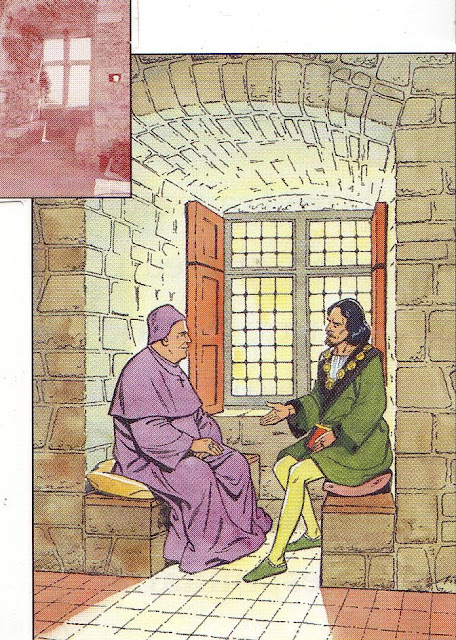Château of Roquebrune - Nobleman's Dwelling: the Common Room
This second room in the Nobleman's Dwelling was used as a communal room and dining room. The doorway in the far corner is the lavatory - see below - which emptied directly outside the castle walls.
In the Middle Ages, tables didn't exist. Planks of wood were laid on trestles, hence the phrase: 'to lay the table.' When the word 'table' was used, it meant the 'food', not the furniture. The soldiers normally sat on wooden chests that were used for storage and were dragged over at meal times. What furniture they did have has disappeared over time and the furniture shown is not correct for the period.
This room and the previous one - the Armoury - were transformed into barracks in the middle of the XVIIIth century.
Tomorrow, we'll take a look at the kitchen. You can see the entrance on the right-hand wall.



























